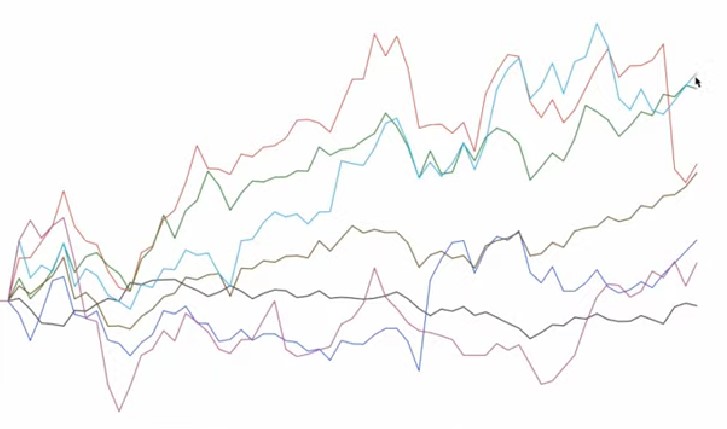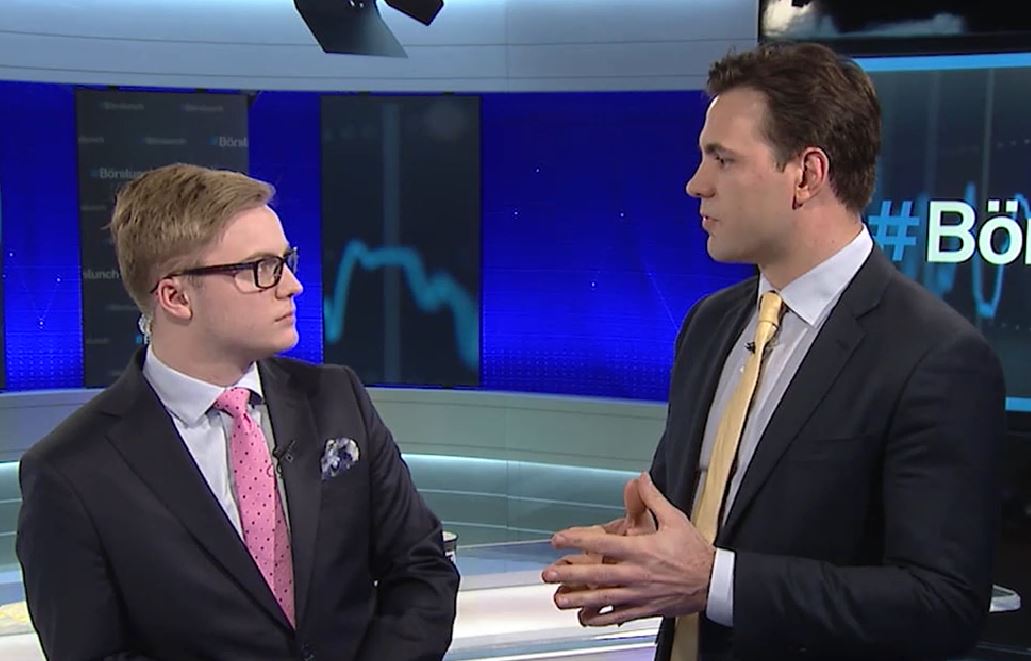Analys från DailyFX
Using ATR to Adapt To Dynamic Conditions in Forex Market
Talking Points:
- ATR, an overlooked tool
- Quickly adapting one’s trading to current market conditions is extremely important
- Tip for identifying when the trading environment has changed
Volatility, and opportunity along with it, has been declining since the end of January – not exactly what we want to see as traders. But what can we do? The market is the market and we can’t control what it does, however, we can control how we trade it, right? Right. We must adapt, adjust our expectations and tweak strategies accordingly. This means take less out of our winners (and losers, too) as well as be more patient between opportunities. They will come, just in smaller doses. Having had many years of experience trading alongside other professional traders, one thing which always stood out to me was how quickly the best traders were able to adapt to new trading environments. They would go from high gear to low gear and back with relative ease.
What is a good tool for measuring the available opportunity in the market? One gauge traders look at is implied volatility. But what is this? It’s a mathematical calculation which isn’t easily relatable and for comparative purposes we only really understand what is high or low relative to historical. But, what does it mean to us in terms of pips? This is where the use of this simple, yet underappreciated indicator comes in – ATR or Average True Range. I use indicators sparingly, but ATR is one I look at regularly. On a daily chart it measures the average daily trading range over a certain number of days. I generally use a 10-day setting as it is timely enough to be useful, but not overly noisy.
How do I use ATR in my trading?
- Determine reasonable targets and stops relative to what the market is offering at the time.
- Look at the direction it is trending and understand that upward means the markets are getting more active, downward is less active.
- When you start seeing regular daily moves considerably greater than the ATR then it is time to be aware that the trading environment could be changing for the better. When ranges begin regularly falling short of recent ATR readings, it is time to consider adjusting expectations downward.
Below is a graph displaying the average 10-day range of seven key pairs (eurusd, gbpusd, usdjpy, usdchf, usdcad, audusd, nzdusd) – So far, at the peak of 2014 the average daily range (ATR) was 100 pips across these seven pairs. Today, it sits just above 50.

Source: FXCM Marketscope 2.0
In conclusion, if you have been frustrated with the trading activity you’re not alone. But, by adjusting expectations using ATR you will find it easier to handle these inevitable periods of low and declining volatility, ultimately keeping you from making costly mistakes which undermine your profitability. Furthermore, when an uptick in movement begins again, you’ll take notice sooner and be able to take advantage of it longer. Tomorrow, via my blog, I will be discussing why I believe April showers could bring May flowers, seeing some good tradable volatility.
–– Written by Paul Robinson of FXSimplified.com
Analys från DailyFX
EURUSD Weekly Technical Analysis: New Month, More Weakness
What’s inside:
- EURUSD broke the ‘neckline’ of a bearish ‘head-and-shoulders’ pattern, April trend-line
- Resistance in vicinity of 11825/80 likely to keep a lid on further strength
- Targeting the low to mid-11600s with more selling
Confidence is essential to successful trading, see this new guide – ’Building Confidence in Trading’.
Coming into last week we pointed out the likelihood of finally seeing a resolution of the range EURUSD had been stuck in for the past few weeks, and one of the outcomes we made note of as a possibility was for the triggering of a ’head-and-shoulders’ pattern. Indeed, we saw a break of the ’neckline’ along with a drop below the April trend-line. This led to decent selling before a minor bounce took shape during the latter part of last week.
Looking ahead to next week the euro is set up for further losses as the path of least resistance has turned lower. Looking to a capper on any further strength there is resistance in the 11825-11880 area (old support becomes new resistance). As long as the euro stays below this area a downward bias will remain firmly intact.
Looking lower towards support eyes will be on the August low at 11662 and the 2016 high of 11616, of which the latter just happens to align almost precisely with the measured move target of the ‘head-and-shoulders’ pattern (determined by subtracting the height of the pattern from the neckline).
Bottom line: Shorts look set to have the upperhand as a fresh month gets underway as long as the euro remains capped by resistance. On weakness, we’ll be watching how the euro responds to a drop into support levels.
For a longer-term outlook on EURUSD, check out the just released Q4 Forecast.
EURUSD: Daily
—Written by Paul Robinson, Market Analyst
You can receive Paul’s analysis directly via email bysigning up here.
You can follow Paul on Twitter at@PaulRobinonFX.
Analys från DailyFX
Euro Bias Mixed Heading into October, Q4’17

Why and how do we use IG Client Sentiment in trading? See our guide and real-time data.
EURUSD: Retail trader data shows 37.3% of traders are net-long with the ratio of traders short to long at 1.68 to 1. In fact, traders have remained net-short since Apr 18 when EURUSD traded near 1.07831; price has moved 9.6% higher since then. The number of traders net-long is 15.4% lower than yesterday and 16.4% higher from last week, while the number of traders net-short is 0.4% higher than yesterday and 10.5% lower from last week.
We typically take a contrarian view to crowd sentiment, and the fact traders are net-short suggests EURUSD prices may continue to rise. Positioning is more net-short than yesterday but less net-short from last week. The combination of current sentiment and recent changes gives us a further mixed EURUSD trading bias.
— Written by Christopher Vecchio, CFA, Senior Currency Strategist
To contact Christopher Vecchio, e-mail cvecchio@dailyfx.com
Follow him on Twitter at @CVecchioFX
To be added to Christopher’s e-mail distribution list, please fill out this form
Analys från DailyFX
British Pound Reversal Potential Persists Heading into New Quarter

Why and how do we use IG Client Sentiment in trading? See our guide and real-time data.
GBPUSD: Retail trader data shows 38.2% of traders are net-long with the ratio of traders short to long at 1.62 to 1. In fact, traders have remained net-short since Sep 05 when GBPUSD traded near 1.29615; price has moved 3.4% higher since then. The number of traders net-long is 0.1% higher than yesterday and 13.4% higher from last week, while the number of traders net-short is 10.6% lower than yesterday and 18.3% lower from last week.
We typically take a contrarian view to crowd sentiment, and the fact traders are net-short suggests GBPUSD prices may continue to rise. Yet traders are less net-short than yesterday and compared with last week. Recent changes in sentiment warn that the current GBPUSD price trend may soon reverse lower despite the fact traders remain net-short.
— Written by Christopher Vecchio, CFA, Senior Currency Strategist
To contact Christopher Vecchio, e-mail cvecchio@dailyfx.com
Follow him on Twitter at @CVecchioFX
To be added to Christopher’s e-mail distribution list, please fill out this form
-
Analys från DailyFX10 år ago
EUR/USD Flirts with Monthly Close Under 30 Year Trendline
-
Marknadsnyheter5 år ago
BrainCool AB (publ): erhåller bidrag (grant) om 0,9 MSEK från Vinnova för bolagets projekt inom behandling av covid-19 patienter med hög feber
-

 Marknadsnyheter3 år ago
Marknadsnyheter3 år agoUpptäck de bästa verktygen för att analysera Bitcoin!
-
Analys från DailyFX12 år ago
Japanese Yen Breakout or Fakeout? ZAR/JPY May Provide the Answer
-

 Marknadsnyheter2 år ago
Marknadsnyheter2 år agoDärför föredrar svenska spelare att spela via mobiltelefonen
-
Analys från DailyFX12 år ago
Price & Time: Key Levels to Watch in the Aftermath of NFP
-
Analys från DailyFX8 år ago
Gold Prices Falter at Resistance: Is the Bullish Run Finished?
-

 Nyheter7 år ago
Nyheter7 år agoTeknisk analys med Martin Hallström och Nils Brobacke










